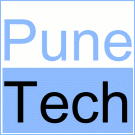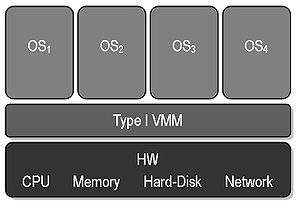
Venture Center is an incubator housed in NCL Pune, created with this purpose:
To nucleate and nurture technology and knowledge-based enterprises for India by leveraging the scientific and engineering competencies of the institutions in the region.
Envisioned Future: To be the organisation that will be credited with creating, shaping and sustaining a “Pune cluster” of innovative technology businesses with a significant economic impact regionally, nationally and globally within the next 20 years.
To find out more about Venture Center, we interviewed Kaushik Gala, the Business Development Manager of Venture Center. Here are excerpts from the interview:
Entrepreneurship Development Center (‘Venture Center’) is a technology business incubator approved by the Department of Science & Technology, Government of India. Venture Center is incorporated as a Section 25 not-for-profit Company established under the Companies Act 1956.
Venture Center was setup with support from the Department of Science & Technology – National Science and Technology Entrepreneurship Development Board (DST-NSTEDB) and National Chemical Laboratory (NCL) (constituent lab of the Council of Scientific and Industrial Research).
2. What are the services that Venture Center will provide incubatee companies?
Venture Center provides:
· Infrastructure – Dedicated labs, shared work-benches, analytical facilities, offices, hot-desks, etc.
· Advisory – Intellectual property, business planning, startup nuts-and-bolts issues, etc.
· Fund-raising – Seed stage fund raising from various sources including government agencies (eg. MoMSME), professional investors, etc.
· Technology commercialization program (‘Lab2Mkt’)
· Information and learning center – Library, databases, workshops, seminars, etc.
3. At what stage do you expect innovators and/or startup companies to approach you?
We offer resources and services at all stages of an early-stage technology startup – ranging from idea/conception, to prototype to Series A/B financing.
4. Obviously you are not interested in incubating any and all startups? Can you describe, with some examples, what sectors you are limiting yourself to?
Our focus is on the areas of material, chemical and biological sciences and related engineering / software ventures. However, some of our services are open to all individual entrepreneurs and startups.
Specific examples include startups that have commercialization technologies related to surgical implants, membranes for water purification, CFD and modeling solutions, etc.
5. Are the innovators expected to move to Pune, into your facility, to avail of any of your services?
For startups that need our infrastructure facilities, being located in Pune is obviously preferable. However, for services such as advisory and fund-raising, they can be located outside Pune as well.
6. How is Venture Center funded? What are your long-term funding plans?
Venture Center is funded via:
· A grant from DST-NSTEDB for start-up costs and operational expenses for the first 5-years
· In-kind support from NCL
· Donations from well wishers
After the fifth year of operation, Venture Center is expected to become self-sufficient. Besides generating revenue from a variety of services, our long-term funding plans include:
· Raising capital from governmental agencies and professional investors to set up an early-stage (‘seed’) fund for investment in technology ventures
· Raising grant funds from governmental and corporate agencies to expand our services portfolio
· Partnering with other R&D labs, domestic/foreign incubators, etc.
![Reblog this post [with Zemanta]](http://img.zemanta.com/reblog_b.png?x-id=6bb6187b-88c4-4266-87ea-ca64efc79317)

![Reblog this post [with Zemanta]](http://img.zemanta.com/reblog_b.png?x-id=f5743e42-43b7-40c7-8c02-50c7534bfd8e)

![Reblog this post [with Zemanta]](http://img.zemanta.com/reblog_b.png?x-id=36a200ba-a012-4352-974c-b7a7267cebc9)



![Reblog this post [with Zemanta]](http://img.zemanta.com/reblog_b.png?x-id=5995d7c5-7ba3-4c85-834f-b8ede9420a01)



![Reblog this post [with Zemanta]](http://img.zemanta.com/reblog_b.png?x-id=d9c89ff4-c359-47eb-923e-dbf73d0eb327)
![Reblog this post [with Zemanta]](http://img.zemanta.com/reblog_b.png?x-id=ce016269-fc61-400a-b03d-0844a9f80161)

![Reblog this post [with Zemanta]](http://img.zemanta.com/reblog_b.png?x-id=46bb08d3-69f4-4541-98b6-29189b874b69)
![Reblog this post [with Zemanta]](http://img.zemanta.com/reblog_b.png?x-id=5b1426a9-6266-4fb0-80b7-17f5abcc2740)